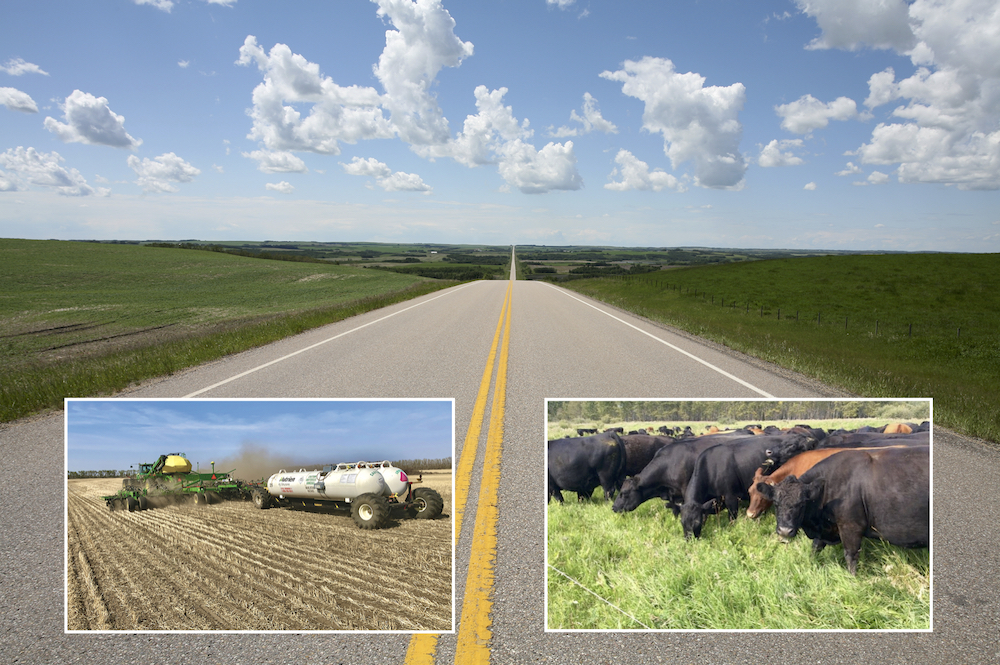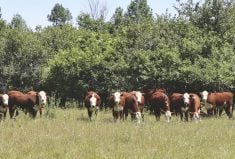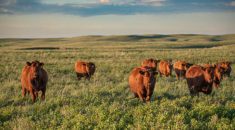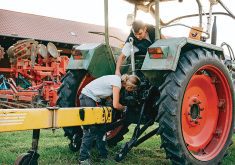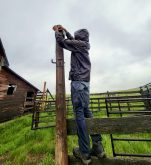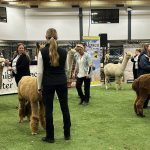Upping your management game just got a lot more attractive.
Producers willing to adopt rotational grazing, 4R fertilizer stewardship or cover crops will be able to get as much as $75,000 per farm from Ottawa’s On-Farm Climate Action Fund.
“The objective of the program is to put funds into the hands of producers to adopt beneficial management practices,” said Mark Redmond, chief executive officer of Results Driven Agriculture Research (RDAR).
Read Also
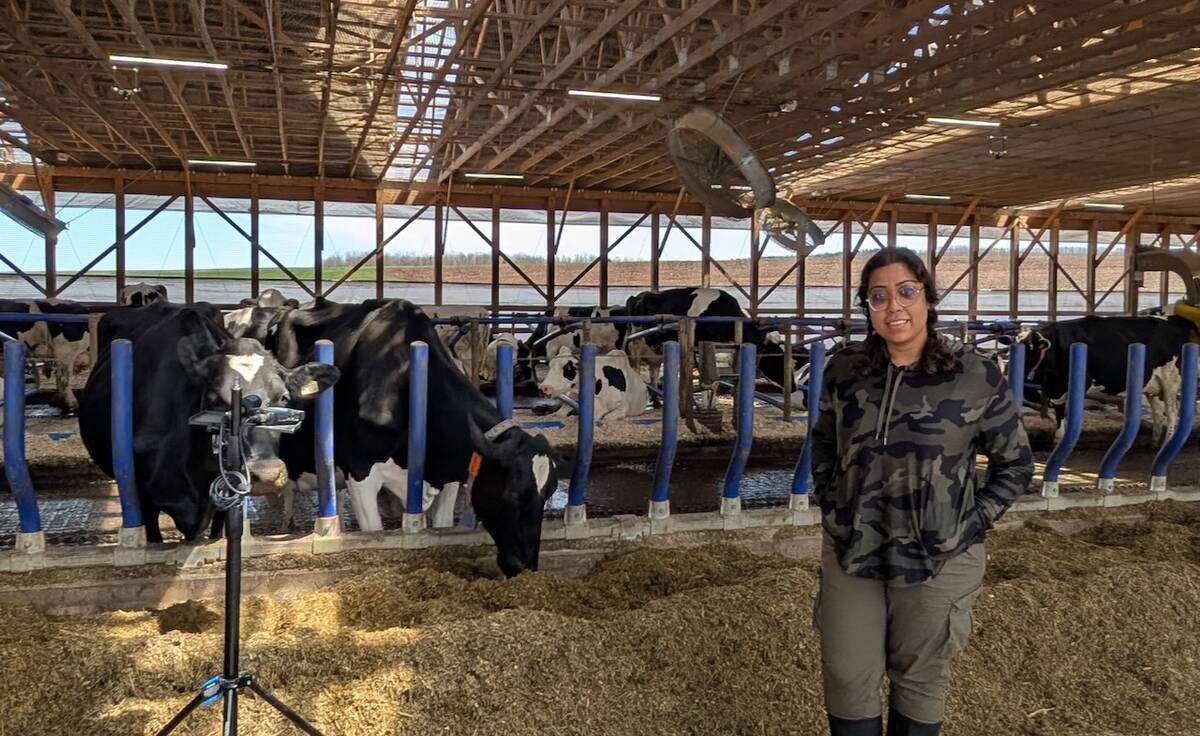
Moo translator and methane measures: There’s an app for that
Dalhousie University researchers use artificial intelligence to create new dairy farm apps that analyze cattle sounds and measure methane.
The research funding agency will be administering Alberta’s $33-million slice of the $183-million federal program. Farmers adopting one of those three practices will be able to get up to 85 cents on the dollar (to a max of $75,000) for things such as water infrastructure and fencing (for rotational grazing), equipment modifications and agronomic services (for 4R implementation) and a payment per acre for cover cropping.
And while it’s still early days for cover cropping, many producers have already adopted rotational grazing or 4R (with little or no government support) because they pay.
Cow-calf producer Morrie Goetjen, who began rotational grazing at his operation in the Cochrane-Cremona area 15 years ago, says there’s a host of benefits, most notably being able to raise more cattle on the same amount of land.
“There are so many positive things from rotational grazing,” he said. “No. 1 is carrying capacity.”
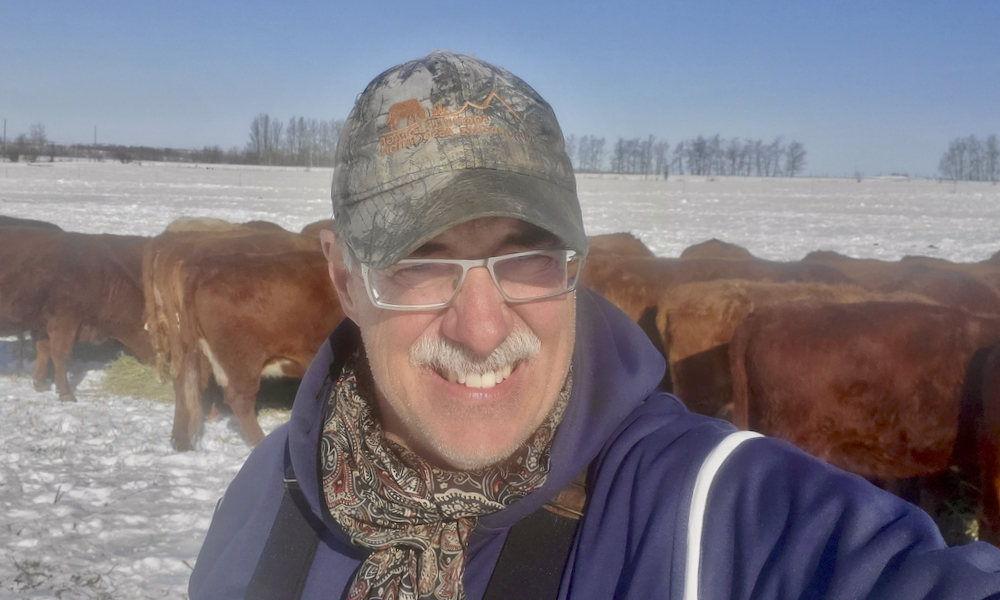
Claresholm grain grower Dean Hubbard started his journey towards what is now called 4R stewardship (using the right rate of the right fertilizer at the right time in the right place) in 1995 when he began regularly soil testing.
Like Goetjen, Hubbard welcomes government support aimed at boosting adoption of these sorts of stewardship efforts.
“With the changing federal environment, agri-policy is moving towards the environment,” he said. “We need to move down these roads.”
How it works
At this point, detailed specifics of the program (which was announced late last month) haven’t been released nor are application forms out. Instead, producers are encouraged to register and indicate the areas they are interested in, said Redmond. (visit the RDAR website to learn more)
There are also other organizations selected by Ag Canada to distribute funds in Alberta: the Canola Council of Canada (for nitrogen management), the Canadian Forage and Grassland Association (for rotational grazing) and Quebec-based ECOCERT Canada (for nitrogen management and cover cropping). However, producers can only deal with one organization. (For contact info, visit the AAFC website.)
There is also a tracking component to the program.
“For example, ‘I’m interested in putting 1,000 acres under nitrogen management,” said Redmond. “They will look at particular practices, that will be the registration process, and then they will be tracking successes and results over the next two crop seasons.”
The idea is to clearly demonstrate that these practices are not just good for the environment but pay financial dividends, he added.
“We’re focusing on early adopters to demonstrate how change can benefit agricultural production. From RDAR’s perspective, we’re going to work with a broad range of producers and measure the benefits and changes associated with these different practices, with the view in the long term to continuously improve the adoption of these different techniques.”
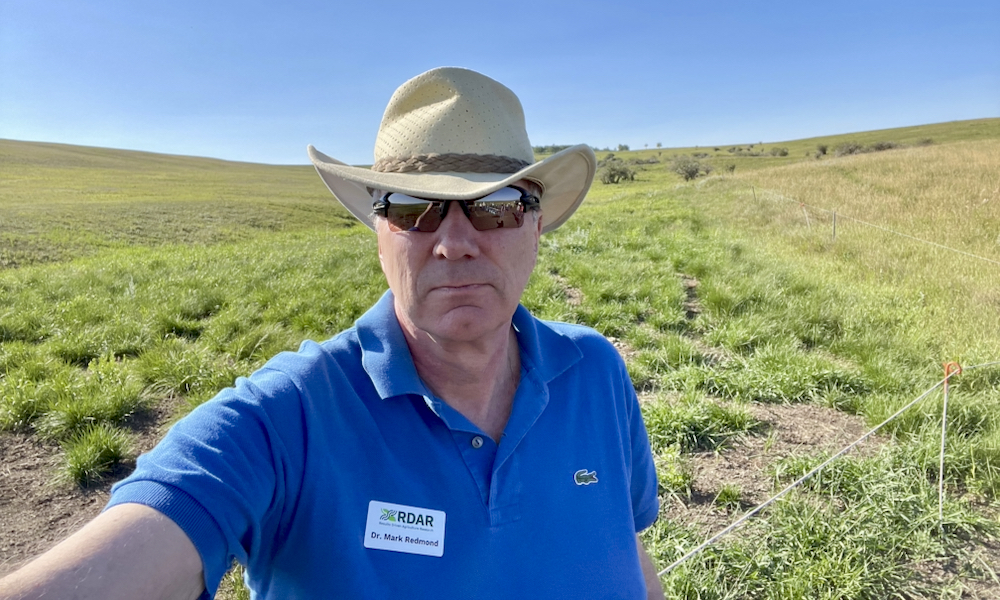
The program has a cap on purchasing farm equipment, but Redmond said there will be opportunities to rent equipment from applied research associations. Things like the cost of seed or soluble urea could be covered for nutrient management, and electric fencing could be covered for rotational grazing, he added.
The benefits
In its announcement of the program, Ag Canada acknowledged there have been barriers that have hindered wider uptake of these measures, including “delayed returns on investment.”
And both Hubbard and Goetjen said it takes time for the benefits to accrue.
Hubbard said once he started soil sampling, he was able to focus his fertilizer use.
“We were using mid-row banding to place all of our fertilizer. That would be at the right place at the right time. We were putting it in right at seeding, and we don’t have to worry about going in with anything else.”
In 2014, Hubbard, who farms with his son, started using variable rate — he found he still used the same amount of fertilizer, but obtained more consistent crop quality.
“On the hilltops, where the fertilizer was reduced, we still had a nice plump kernel,” he said. “Where before, when we left our rate up, the kernel would have a tendency to shrivel.”
Over time, there was an improvement in soil health and now he uses less fertilizer, he said.
“But it’s a slow process — you don’t add organic matter really quick,” he added.
Still, Hubbard said he hopes the new initiative will help get more producers to adopt 4R practices.
“In talking to local fertilizer dealers, I’m surprised by how few people actually soil sample frequently,” he said. “If they can do something to encourage getting the right rates, I hope more people will move into this.”
For Goetjen, improving his grazing system has become a passion and produced numerous benefits.
Some are easily explained. For example, having cattle intensely graze means weeds get knocked back, and then giving the pasture a rest gives forages time to recover.
“You don’t get near the encroachment from weeds that you get from continuous grazing scenarios,” he said.
But Goetjen has also noticed better gains on his calves, and much greater longevity — he said he can keep his cows 11 to 12 years, and they remain in really good shape.
And in a tough year like the last one, the system really shows its worth.
“There are some real advantages,” he said. “If you have grass stockpiled, and you encounter a drought like we had last year, there’s no question that you are better able to withstand the drought.”
Last year, Goetjen was able to stretch his grazing. He said he didn’t really run out of grass until the first or second week in October.
“The thing about rotational grazing is that you always have the option (in a good year) of leaving grass standing, and that can be a real bonus in a dry year like we had,” he said.
More training, more data
Goetjen said he hopes the new program will be an opportunity for producers to learn more about these stewardship practices — and that’s also the goal of his organization, said Redmond.
“We don’t want producers to feel as though they are going through this alone,” he said. “We want to give producers confidence that they are going to have success. We’re looking to link in some educational resources, with the colleges and the applied research associations across the province to deliver training.”
That will include webinars, and one-on-one coaching, he said.
While the On-Farm Climate Action Fund (or OFCAF) has a clear environmental target (reduce annual greenhouse gas emissions nationally by up to two million tonnes by 2024), it’s also meant to directly benefit farmers, said Redmond.
“The OFCAF program will produce regional data which shows how good our producers are doing,” he said. “It’s going to increase the value of our product. With the environmental, social and governance (ESG) goods being measured, it’s going to increase the value for potential investment in Alberta agriculture. It’s a balance with ESG and economics.
“With this work, we will show societal benefits, government benefits and benefits as a whole.”
The program will be rolled out in three stages, Redmond said. Nutrient management will be the focus this spring, rotational grazing will be implemented over the summer, and cover cropping will be implemented in the fall.
“You’ll see a staged rollout, following Mother Nature and as the season goes,” he said. “But you will be able to register and make plans for your production over the summer, starting in the next month or so.”


